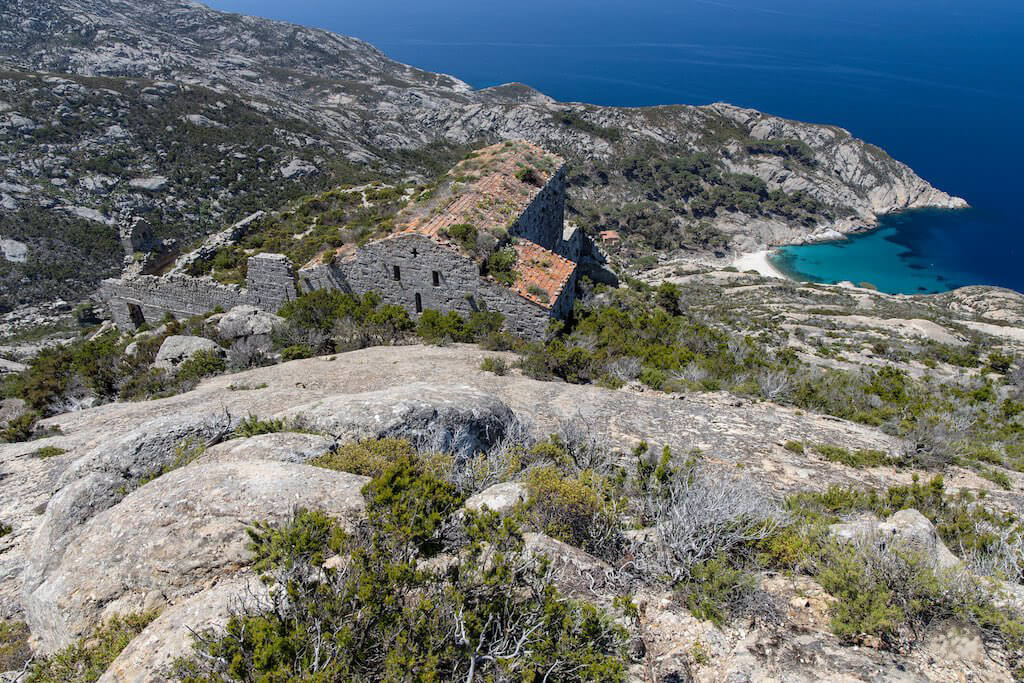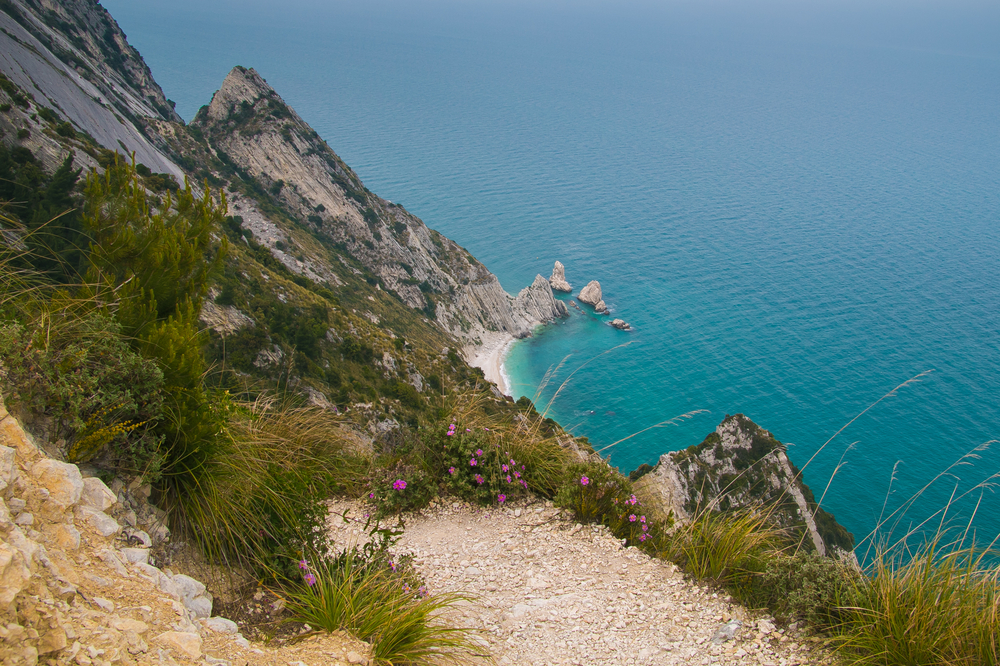When thinking about trekking, almost everyone thinks of the Alps and the scenery they conjure up in our minds. However, our country offers trekking routes in all its regions and we have therefore selected for you 5 trekkings with a sea view, so if you get tired of being on the beach, you will have a plan b ready to go! All you have to do is bring your trekking poles with you, wherever you go.
If you have read The Count of Montecristo, the famous (and, in our opinion, beautiful!) novel by Alexandre Dumas, you will certainly have heard of the island of Monte Cristo. Unfortunately, the route to Simbad the sailor‘s cave is not yet known, but there are other routes through which you can explore the island. Montecristo is nowadays the largest marine park in the Mediterranean. It has been recognised as a nature reserve for the protection of the biodiversity of the Tuscan Archipelago; therefore, it is not possible to explore it on your own but you must book a guided excursion.
The island offers several trekking routes, but only two allow you to see the remains of the monastery 340 metres above the sea, dedicated to San Mamiliano and built by Benedictine monks in the 7th century, and to continue to the Grotta del Santo, a place of meditation with some ex-votos. The first path of medium difficulty is 2 km long, and takes about two hours. The second, which is more difficult, is 3 km long and takes about 3½ hours. For information and reservations write an e-mail or call 0565/908231.
The Portonovo ring (trail number 309), in the Conero Park , explores the best of the Marche’s bay, famous not only for its blue flag beaches but also for its nature trails just a few kilometres from Ancona. It is an easy route, lasting 1 hour and 30 minutes. It starts from the small square in Portonovo and continues to Lago Grande, also ideal for birdwatchers. You reach the Fortino Napoleonico, a building dating back to the early 19th century that now houses a hotel, and then continue on to the imposing Guard’s tower, also known as Torre Clementina or Torre De Bosis, built in the 18th century as a defence against pirates, and which in the following centuries housed great men of letters such as Gabriele D’Annunzio. This leads to the church of Santa Maria di Portonovo, a jewel of Romanesque art, just a few steps from the sea, in front of the beautiful Vela beach. The church, mentioned by Dante in the Divine Comedy, can be visited but unfortunately is not always open. Not far from the church is another brackish lake, Lago Profondo, located on the slopes of Monte Conero. Finally, taking the same path again, you can return to the small square where you started.


This is the ancient name of the trail that goes through the historic villages of Maratea, returning to the traces of Lucanian religious tradition. The path starts at the port of Maratea, continues through the village of Fiumicello, the historic centre of Maratea and then in Castello, ending at the statue of Christ the Redeemer, 21 metres high and second only to the one in Rio de Janeiro, on Mount San Biagio.
It is an 8 km uphill route that includes steps, road crossings and crossings of land with a maximum height difference of 400 metres. The time required for this hike is about six hours.
This trail can be hiked all year round with experienced guides from the Herentas association, which also provides a logistics service and refreshment points along some of the routes. Excursions can be booked by calling 3297881807.
It is the most beautiful panoramic hike with a view of the sea on the entire Amalfi Coast. The Path of the Gods starts from the church of San Matteo in Bomerano, a part of Agerola 650 metres above sea level, then crosses Nocelle and continues along the ancient route of the Hellenic settlers, once dominated by temples. Eventually, over 1500 steps, you descend to Positano.
The path, which we recommend you tackle from the top down, is marked with white and red signs numbered 02. It is an 8 km tourist trail and of slight difficulty, but is not recommended for those suffering from vertigo. The walking time is about four and a half hours. During the walk through the Mediterranean maquis, you will be able to enjoy the splendid views of the coastline and the sea as far as the eye can see. The path still retains all its charm, which has inspired numerous writers and poets over time. Among them, Italo Calvino, who described the Path of the Gods as “that road suspended over the magical gulf of the Sirens still ploughed by memory and myth“.
The Infinite Trail is a scenic route connecting Portovenere with Riomaggiore, the first of the Cinque Terre towns. It is an ancient path, 14 km long, which takes three to four hours, depending on one’s pace. The start is in Portovenere, in Piazza Bastreri; from here begins the first section of the trail, which, via a flight of stone steps, skirts the Doria castle, offering spectacular views of the three islands of Palmaria, Tino and Tinetto.
We then take the path marked by the CAI in red and white to reach the first stage, Campiglia. From Campiglia, continue towards Riomaggiore, but first climb to Colle Telegrafo. From there onwards, each clearing offers a regenerating and panoramic stop. The descent goes through the characteristic landscapes of the Cinque Terre National Park, among cultivated terraces, scents and roads marked by typical dry stone walls. The last stop before the final stretch of the trail is the Sanctuary of Nostra Madonna di Montenero, at an altitude of just over 300 metres. Thus, crossing the last stretch of the path that falls within the Cinque Terre National Park, we finally arrive at the colourful town of Riomaggiore.


